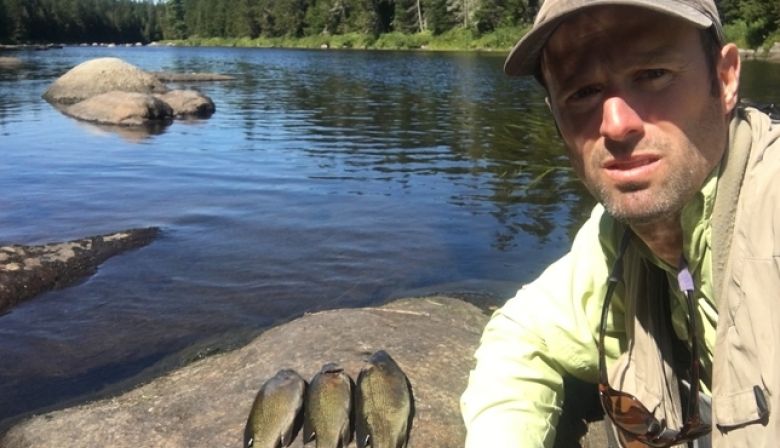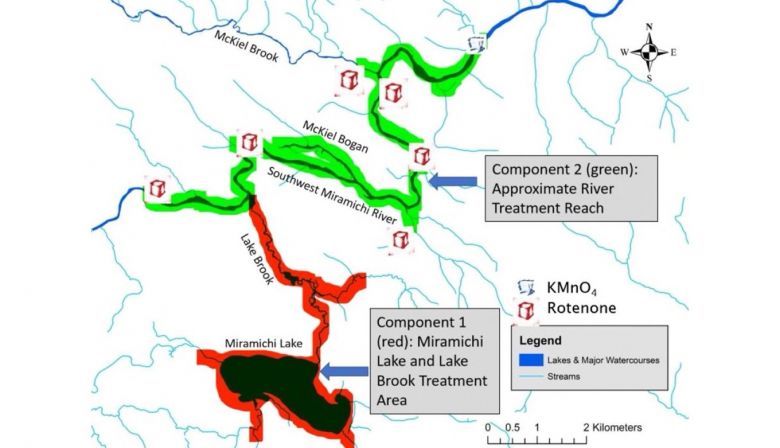The treatment plan will require approval from the federal Department of Fisheries and Oceans. The application to treat the river was only added to the original request to DFO on April 8, which may make it too late to treat the river into 2021.
If the Rotenone treatment is successful all smallmouth bass in Miramichi lake would be killed within hours, along with almost every other species of fish. A proposed recovery plan would allow the lake to repopulate with some fish species making their way into it via the brook.
Other, non-migrating fish species would be transplanted to the lake. Adult invertebrates are not expected to be impacted, nor are birds and insects.
“For the most part studies show that zoo plankton and invertebrates recover to pre-treatment levels the very next spring after treatment, or at least within a year,” said Wilbur.
According to Finlayson, who participated in the online webinar from his home in California, the late August, early September window for treatment will give time for migrating fish like gaspereau to leave the lake for the annual return to the sea, while also providing warmer water, increasing rotenone’s effectiveness, and reducing the amount of time it takes to dissipate.
He says camp owners will be able to begin using the lake three days after completion of the treatment, with the rotenone likely dissipated entirely within 30 days.
Those statements do little to ease concerns for Trish Foster. Foster represents a group of camp owners on the 600 acre lake.
She’s disappointed New Brunswick’s Department of Environment and Local Government waived the requirement for an environmental impact assessment on the original application involving treatment of just the lake, citing the danger smallmouth present to native Atlantic salmon.
“None of our concerns have changed,” said Foster.
Foster says she’s worried a second, or even a third application of rotenone will be needed to eradicate the bass in the lake. She cites cases in Washington State where multiple applications were required in over 200 lakes where rotenone was used.
A 2002 EIA in Washington state says rotenone does not always kill the targeted fish, and in many other cases, the invasive fish were quickly reintroduced back into the lakes illegally. In 508 Washington lakes treated, 283 had to be treated more than once.
Foster says her group does not see anything to be gained by continuing to meet with the working group pushing for the rotenone treatment, but will continue to press the provincial government for an EIA.
The New Brunswick salmon groups are confident rotenone will work in Miramichi Lake.
But the ASF’s Neville Crabbe says they are considering the possibility a second treatment could be required in the Miramichi River itself if the smallmouth are not eradicated the first time.
If so, he said, they would strive to have it done in “quick succession” rather than waiting another year.

